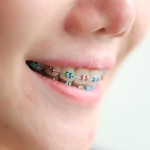
One of the challenges of conducting reviews is the tendency for researches to use a variety of different outcome measures in their trials. Recently this has lead to development work on the core outcome sets (COMET Initiative). This is currently in its infancy and there are no core outcome standards (COS) for orthodontics.
The aim of this review was to identify outcomes measured in recent orthodontic trials, classify them and consider if any were under reported.
Methods
Searches were conducted in Medline, Embase, CINHAL, and the Cochrane Central Register of Controlled Trials (CENTRAL). Parallel, crossover or cluster randomised controlled trials (RCTs) were considered. Two reviewers independently assess studies for inclusion and classified outcomes into 6 domains; 1) disease activity (morphologic features or changes of malocclusion), (2) physical consequence of malocclusion, (3) functional status, (4) social outcomes and quality of life, (5) health service resource utilization, and (6) adverse effects of treatment. Publications from the same study but involving different outcome measures or follow up periods were considered separate studies.
Results
- 133 studies were included.
- The number of studies that reported each of the following domains were: –
- 84 (63%); morphologic features of malocclusion
- 43 (32%); adverse effects of orthodontic treatment
- 43 (32%); health resource utilization
- 12 (9%); quality of life
- 10 (8%); functional status
- 3 (2%); physical consequences of malocclusion
- There was no consistency in the outcomes selected among the trials to measure these domains.
Conclusions
The authors concluded
Most of the outcomes used in orthodontic research are concerned with measuring morphologic changes of treatment and do not reflect patient perspectives. Five of the 6 domains were infrequently evaluated, and outcomes were heterogeneous. A core set of outcomes for clinical trials of orthodontic treatment interventions would help to overcome these issues.
Commentary
This review highlights a focus on just one or two outcome domains and also a lack of consistency of outcomes within these domains. This lack of consistency is an issue when comparing studies and for reviewers. The authors rightly highlight the core outcome measurement in effectiveness trials (COMET) initiative which is aiming to develop agreed outcome sets across medical an dental areas. It is also worth noting that this review just focused on the last 5 years so that it represents recent practice within orthodontic research.
Links
Tsichlaki A, O’Brien K. Do orthodontic research outcomes reflect patient values? A systematic review of randomized controlled trials involving children. Am J Orthod Dentofacial Orthop. 2014 Sep;146(3):279-85. doi: 10.1016/j.ajodo.2014.05.022. PubMed PMID: 25172249.

Thanks for the review @TheDentalElf: Orthodontic research is currently using a narrow range of outcome domains http://t.co/KFcWuOo9DT”
SR aimed to identify outcomes in recent orthodontic trials, classify them and consider if any were under reported http://t.co/sk9UqNse8U
The heterogeneity of outcome measures in trials has lead to development work on the core outcome sets. http://t.co/sk9UqNse8U
In orthodontic research most outcomes measure morphologic changes of treatment and don’t reflect patient perspectives http://t.co/sk9UqNse8U
A COMET for treatment interventions may overcome issues such as infrequent evaluations and heterogeneity of outcomes. http://t.co/sk9UqNse8U
Systematic review focused on the last 5 years so that it represents recent practice within orthodontic research http://t.co/sk9UqNse8U